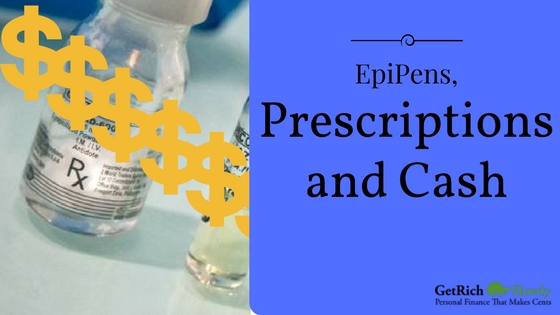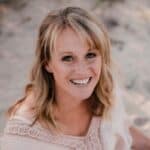What’s the Cure for the High Cost of Prescriptions?

The recent uproar over the cost of EpiPens, the life saving self-injection device that contains epinephrine, a chemical that narrows blood vessels and opens airways in the lungs to offset an allergic reaction, has garnered tremendous media attention and consumer outrage. Through massive marketing and outreach efforts by the manufacturer, Mylan, EpiPen has become to the go-to device for anyone facing a potentially serious or life-threatening allergic reaction. It is a brand that has “become” the device, like Kleenex has “become” tissues, and Jet Ski has become the catch-all for personal watercraft.
The EpiPen price has been raised 17 times in 11 years. When Mylan bought the device from Merck KgAA, a German company, in 2007, it cost $124 for a two-pack. Today, a two-pack costs more than $600. And there is no real competitor in the market, as Auvi-Q, a similar product launched in 2013 by Sanofi, was withdrawn in 2015 because of dosing issues. Mylan controls 94% of this market.
Under fire from all sides for the last few weeks, Mylan announced it would rapidly bring to market a generic, but is unclear how much impact this will have.
A complicated scenario
Here’s what I learned when I was researching this issue: while Mylan does control the price of the product, it does not control the price to consumers — health insurance companies do. According to an article published recently by Ronny Gal, Ph.D., a senior analyst at the investment bank Sanford C. Bernstein & Co. (I found it on a fascinating website called drugchannels.net), in the wake of Sanofi pulling its drug, “Mylan was in a position to price up Epipen, which they did — by 15% in November and by another 15% in May. … The (insurance) payors got mad and raised the pain level on patients — raising copays and toughening medical policies (this is important, Mylan does not determine price to consumers, payors do). As Epipen is broadly purchased ahead of the new school year, the pain became acute for many families over the past month. There were lots of posts on mother’s networks, the media caught wind of the story and now we have multiple politicians jumping on the bandwagon.”
This got me thinking about the cost of prescriptions in general. Way, way back in the good old days of the mid-1980s, when I first entered the working world, I had a $5 co-pay on my prescriptions. Over the years, as insurance plans have morphed and HMOs were invented and employers began searching for ways to save money, we had a tiered prescription plan that started at $5 for basic generic drugs and ended at $50 for really important stuff.
Today, under my husband’s company’s insurance plan, we have a $3,000 annual deductible we have to meet. Until we hit that $3K, we pay out of pocket for EVERYTHING. This has ended up being quite an education, especially since we are at the age now where there are daily medications for things like blood pressure and prostate. Luckily (or unluckily), we have had a run of bad health and met the deductible for the first time, about halfway through the year.
It is these broad-deductible types of plans (which I think more and more of us are opting for as a way to save up front on the premiums taken out of the paycheck) that are making many of us painfully aware of the full cost of prescription drugs.
As Matthew Herper recently noted in an article on forbes.com, “If a customer is paying a $73 co-payment on a $600 device, this is a good deal. But a lot of consumers no longer simply have a co-pay on their drug purchases. They have a large deductible — an amount of money they must spend before their insurance kicks in. A Kaiser Family Foundation survey last September found 24% of consumers had high-deductible plans. ObamaCare is one reason for the rise, but another is that employers are turning to these plans more frequently.” Remember, too, that is the insurers who are determining the costs to the consumers by manipulating copays, discounts and rebates, not Mylan.
And in multiple interviews, Mylan chief executive Heather Bresch has made it a point to note that Mylan “only” gets $275 of the $608 list price for two EpiPens.
Hunting for affordable medications
The high cost of his prescriptions led my husband on a mission to figure out the lowest-cost way we could deal with it. Because even generics — if there are any — aren’t cheap anymore. He discovered a website called GoodRX, which not only showed him the price of his medications at all our area pharmacies, but also offered a big-discount coupon. So my husband now gets his medications at WalMart, which is considerably cheaper than other pharmacies in our area, and uses the coupons. There are other similar websites out there.
Another smart strategy is to always ask your doctor for samples and coupons. They have closets FULL of samples. Our son has acne, and when we went to the doctor to have it looked at, he prescribed two medications, one being Epiduo. This is $300-$400 for 1 small tube and it’s not covered by most Medicare and insurance plans (including ours). Now, acne is not life-threatening, but for a 15-year-old boy, it might feel like it.
Luckily, our doctor loaded me up with samples and also gave me a one-time coupon. We filled it once, using that coupon (cost to us $45). Since then we have just used the samples. His prescription for clindamycin phosphate was almost as expensive, but I discovered there are over the counter creams that have the same ingredient, and with pharmacy coupons I can get it cheaper than it would be with prescription discounts.
Hunting for discounts, rebates and coupons, asking your doctor for as many samples as they will spare, shopping from pharmacy to pharmacy to get the best price (the disparity among stores is shocking as well), and making sure you understand your insurance coverage and are getting the most out of it — these are all keys to helping to manage the cost of your medications. Needless to say, I am not looking forward to those golden years, when our medications increase and our ability to pay goes down.
How about you? What tips do you have for managing the cost of your prescriptions? Tell us here in the comments or on our Facebook page!
Become A Money Boss And Join 15,000 Others
Subscribe to the GRS Insider (FREE) and we’ll give you a copy of the Money Boss Manifesto (also FREE)

